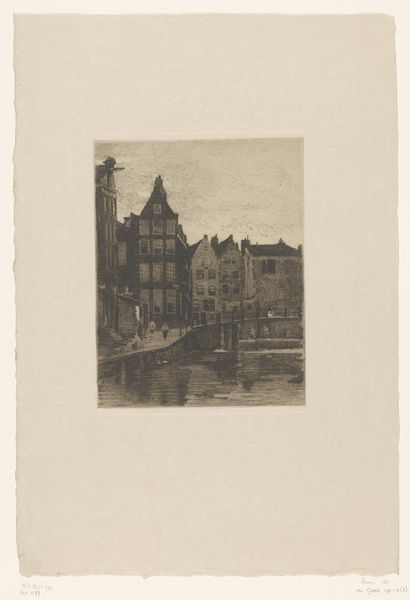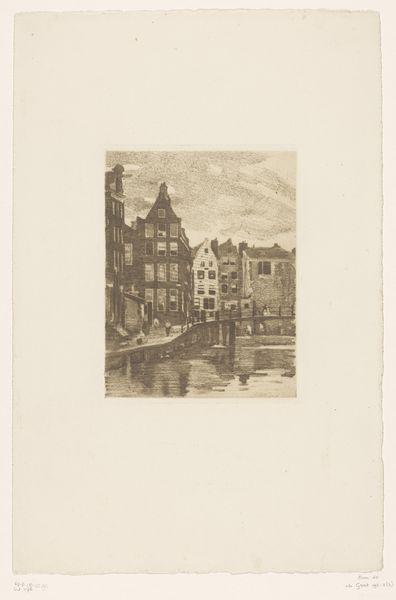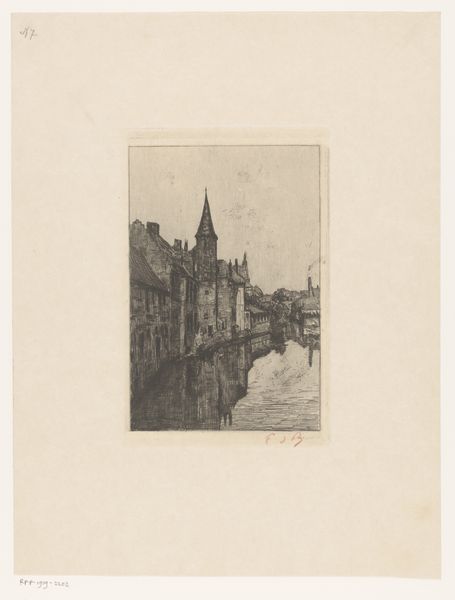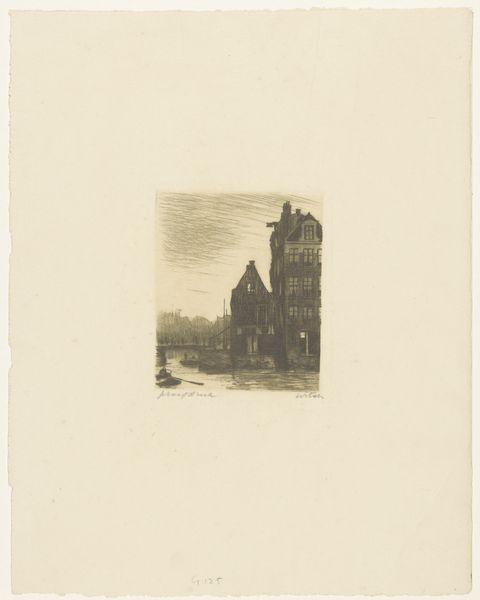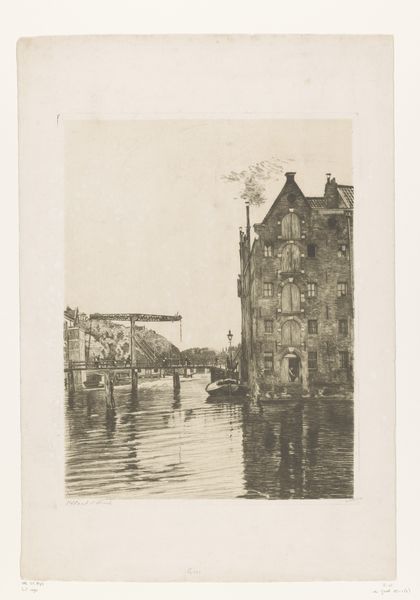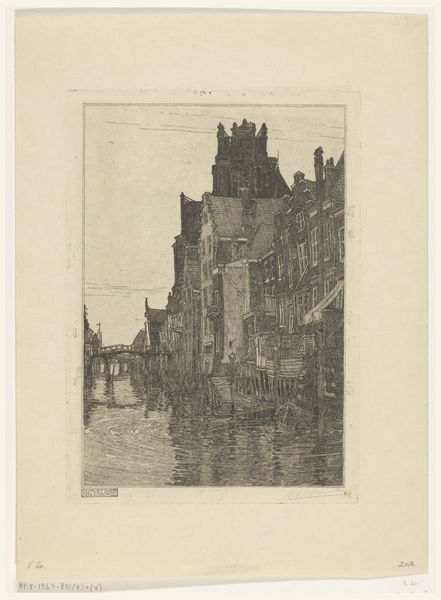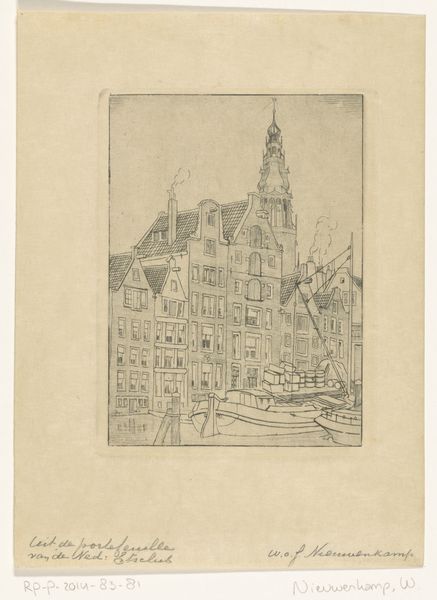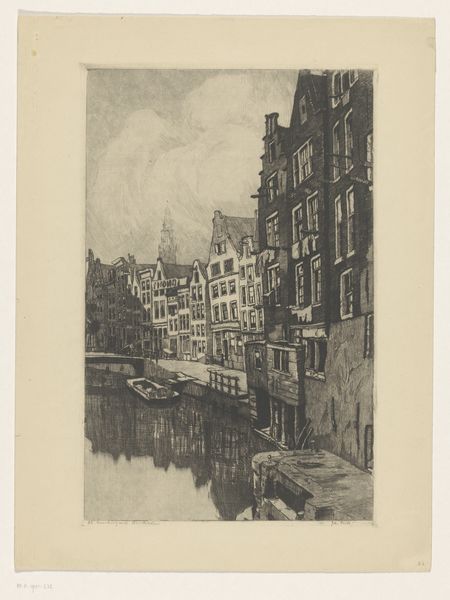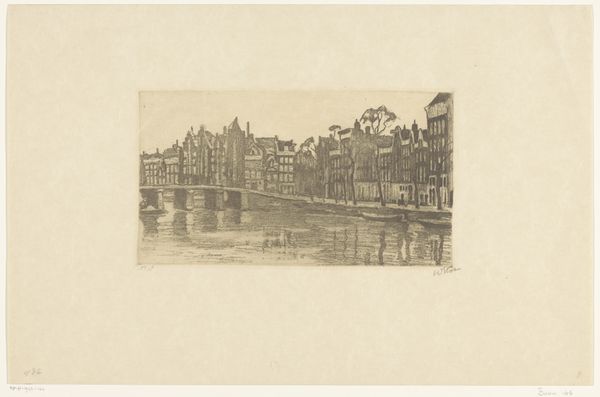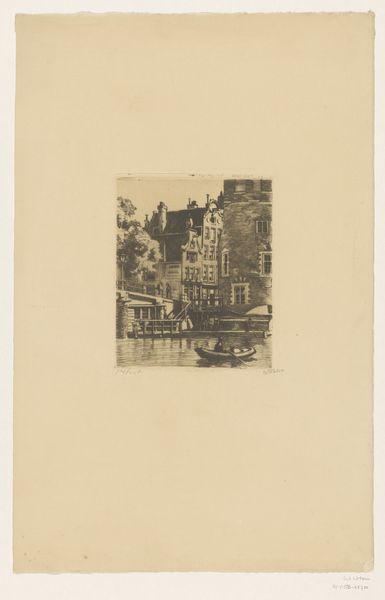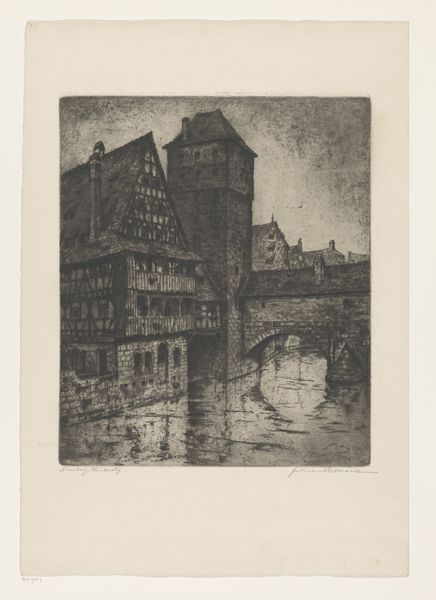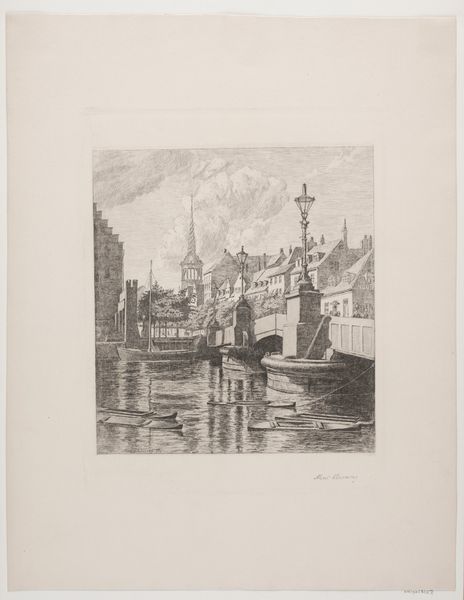
Gezicht op de St. Nicolaaskerk en de Schreierstoren te Amsterdam 1897 - 1935
0:00
0:00
drawing, print, etching, paper
#
drawing
#
dutch-golden-age
#
ink paper printed
# print
#
etching
#
landscape
#
paper
#
cityscape
#
watercolour illustration
#
watercolor
#
realism
Dimensions: height 169 mm, width 132 mm, height 315 mm, width 236 mm
Copyright: Rijks Museum: Open Domain
Curator: This etching on paper, "View of the St. Nicholas Church and the Schreier Tower in Amsterdam" by Izaak Leendert Bedding, probably created sometime between 1897 and 1935, offers a glimpse into the city’s soul. Editor: My first impression is one of subdued strength. Despite its monochromatic palette, the artwork exudes an assertive historical presence, standing as a silent testament to Amsterdam's past. Curator: The image pulsates with recognizable forms of faith, commerce, and navigation reflected in the water, binding sacred and profane in a very Dutch synthesis. Consider, too, that the etching medium itself often signified the democratization of imagery. Editor: Absolutely. The strategic inclusion of these architectural symbols fosters narratives concerning societal power structures, like the church, along with Amsterdam’s prominent role in international trade—all framed by the reality of a working waterfront. This image acts as both portrait and commentary. Curator: Indeed, the St. Nicholas Church, dedicated to the patron saint of sailors, echoes the importance of maritime activities. The Schreierstoren—or "Weepers Tower"—resonates too with a deeply emotive meaning, recalling the sorrow of women seeing their loved ones embark on perilous voyages. Editor: And we must consider who controls this visual narrative and what aspects of society they choose to foreground, or perhaps more importantly, leave out. For instance, what might the reflections in the water suggest metaphorically? Curator: Perhaps they mirror the hopes and fears invested in these symbolic structures; they visually bind the terrestrial with the psychic realm. But the choice of a landscape devoid of overt human activity grants primacy to these architectural actors. Editor: Yet their existence implicitly depends upon human enterprise. Ultimately, this artwork captures a moment in Amsterdam’s development. A space of reflection, visually marking the relationship between power, commerce, faith, and the ever-flowing currents of a people's lived reality. Curator: Looking at this etching, I sense a symbolic weight embedded in every stroke. Editor: I’m struck by how a seemingly simple cityscape etching holds such complex layers of meaning.
Comments
No comments
Be the first to comment and join the conversation on the ultimate creative platform.
